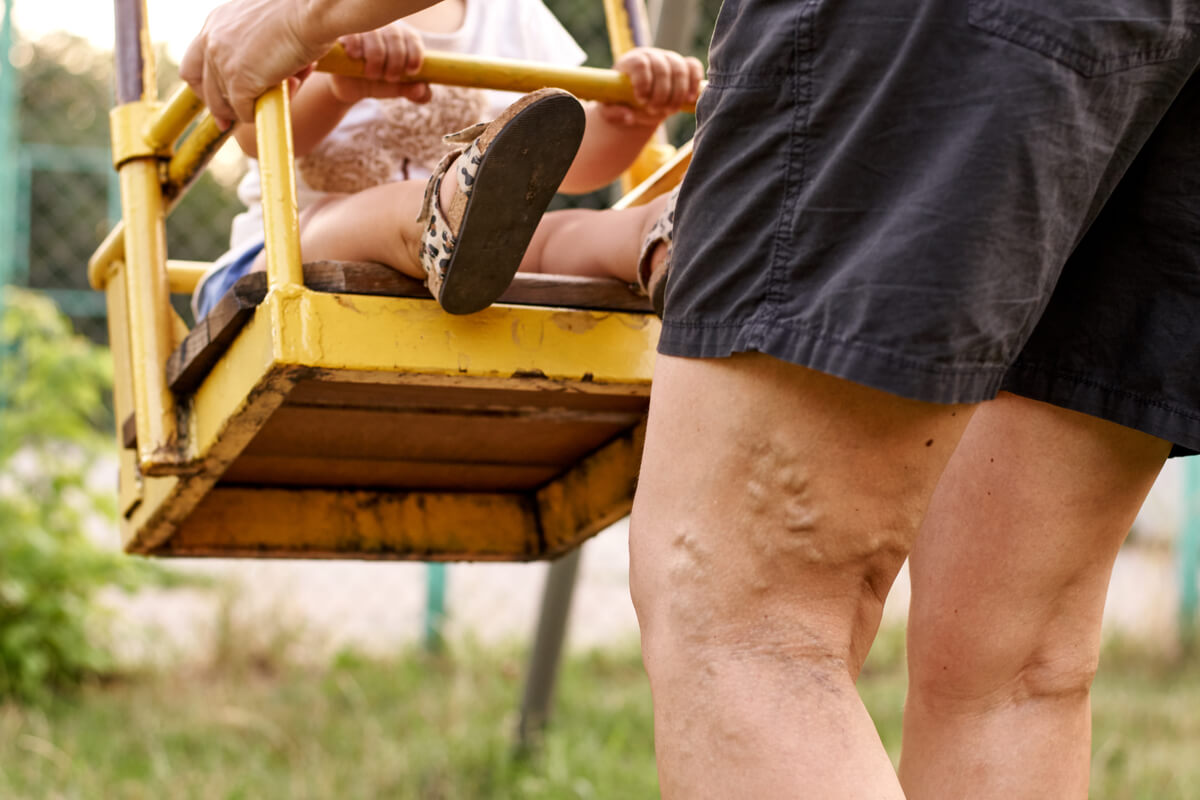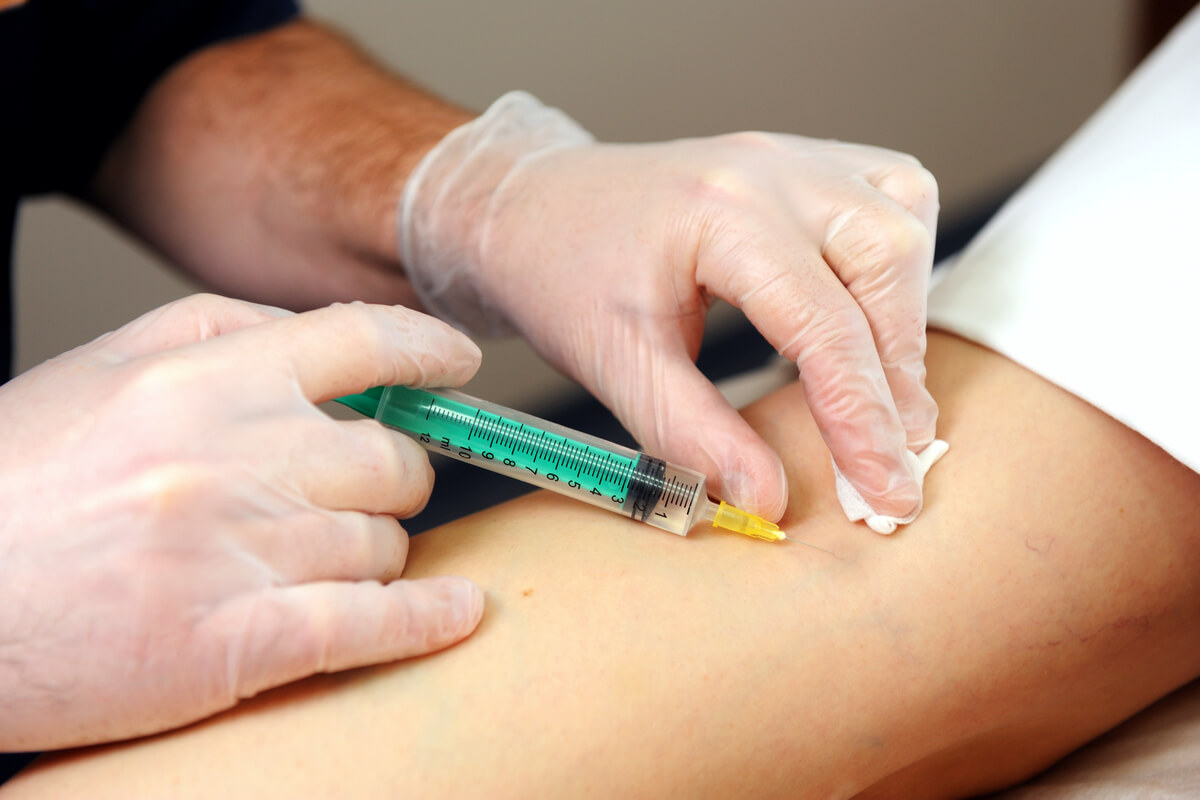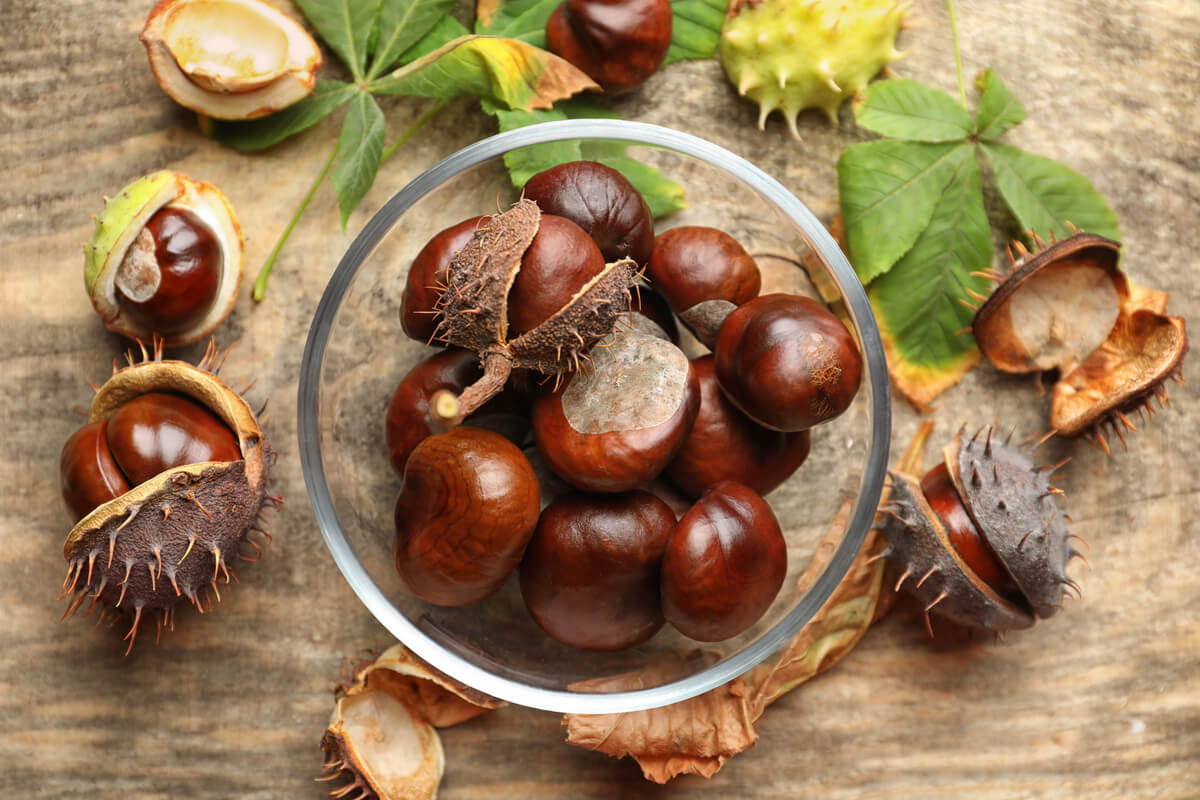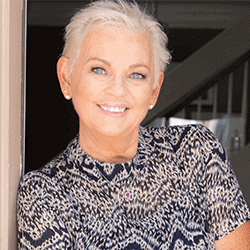What are varicose veins?
Your body has two types of circulatory vessels: the arteries, which channel blood from the heart to the extremities, and the veins, which bring blood from the extremities back to the heart. Of all the veins in your body, leg veins have the hardest time carrying blood back to the heart. To accomplish this difficult task, your legs are equipped with one-way valves that keep the blood moving in the right direction. But, if these valves fail to close properly—or your veins become damaged and the valves leak—blood can pool in the legs, causing swelling and injury to the vein’s walls. Over time, this can cause varicose veins. (25)(30) Varicose veins affect 22 million women and 11 million men between the ages of 40 and 80. (17) Of those, only about two million people will experience significant symptoms of chronic venous insufficiency (CVI)—a condition that increases the risk of varicose veins and severe circulatory problems. (17)(23)Did you know? Spider veins are a mild form of varicose veins and consist of clusters of broken capillaries that appear like jagged red, blue, or purple lines on the surface of the skin. Spider veins are painless and do not pose a health risk. (22)

Women are more likely to develop varicose veins than men.
Risk factors for varicose veins
A number of things can put you at risk of varicose veins. While some factors like sex or a family history are beyond your control, others can be due to lifestyle choices. Risk factors include:- Advancing age
- Being female
- Contraception or hormone replacement therapy (HRT) use
- Family history
- History of DVT
- Lack of exercise
- More than two pregnancies
- Obesity
- Prolonged sitting and/or standing
- Smoking
- Tall height (3)(10)(17)
Did you know? Varicose veins that occur during pregnancy usually go away by themselves within two to three weeks after giving birth. (29)
Varicose vein symptoms
Depending on their severity, varicose veins may cause the following symptoms:- A burning sensation in the legs
- Dry, irritated skin (varicose eczema)
- Itching
- Leg cramps
- Limb heaviness and fatigue
- Painful legs
- Skin discoloration (hyperpigmentation)
- Skin ulcers
- Swelling (17)(25)
How to prevent varicose veins
You can’t always prevent varicose veins, but there are ways to reduce your risk. These same strategies may also help prevent varicose veins from worsening and ease discomfort if you already suffer from the condition. For those who are overweight or obese, losing weight can reduce the risk of varicose veins by improving blood flow and reducing the amount of pressure that’s placed on the veins. It’s also important to stay physically active because moderate exercise helps to pump blood through the veins. However, the National Heart, Lung, and Blood Institute notes that vigorous exercise may worsen existing varicose veins. (31) If you do have the condition, it’s wise to avoid prolonged standing or sitting and to elevate your legs when possible. (17) The National Institutes of Health also advises avoiding tight clothing, especially around your waist, upper thighs, and legs. The exception to this is the use of compression stockings. (4) These stockings exert gentle pressure on the legs and may help relieve pain, swelling, and other symptoms. (31)How to treat varicose veins
Although lifestyle changes can help prevent or minimize symptoms, severe cases may require medical varicose vein treatment. These can include in-office treatment, outpatient procedures, or surgery. Here are three of the most commonly used treatments.1. Endovenous ablation
Endovenous ablation uses radiofrequency or lasers to cauterize and close varicose veins. Generally safe and less invasive than surgery, the procedure leaves virtually no scars. Endovenous ablation is usually performed by a specially trained interventional radiologist on an outpatient basis. (33)
During sclerotherapy, a chemical irritant is injected in veins, causing them to shrink and disappear.
2. Sclerotherapy
This in-office technique is used to treat spider veins and small varicose veins. During the procedure, a chemical irritant is injected into veins, causing them to shrink and disappear. Each session is followed by the use of compression stockings. Studies show that sclerotherapy significantly improves symptoms compared to compression stockings alone. (25) It’s also been found to improve the appearance of veins in 70% of patients. (17)Did you know? Although sclerotherapy can be highly effective for spider veins, it will not prevent new spider veins from forming. (22)
3. Surgical stripping
Surgical vein stripping is used to remove or tie off a large vein in the leg called the superficial saphenous vein. It is often used in patients at risk of blood clots or chronic sores, or to relieve leg pain and heaviness. Typically performed under anesthesia in a hospital or surgical center, the procedure is generally considered safe. (32)5 supplements for healthier veins
Combined with a healthy diet, these supplements have been shown to reduce the risk of the condition and may help to provide symptomatic relief for existing varicose veins.1. Butcher’s broom
The root of this small evergreen shrub is a rich source of flavonoids and anti-inflammatory steroid saponins which have been shown to contract veins. (21) In one multi-center double-blind, randomized, placebo-controlled trial, researchers gave 148 patients with CVI either butcher’s broom or a placebo. By the end of the study, those taking the herbal supplement had less leg swelling and an improvement in the feeling of heaviness, tingling, and tension compared to the placebo group. (28)2. Diosmin
This flavonoid, which is found in the peel of many citrus fruits, reduces inflammation in veins, improves blood flow, and reduces pain in people with CVI and varicose veins. (8) This natural compound has also been shown to reduce the pain and severity of varicose vein-related eczema. (20) Diosmin can be taken alone or in combination with another citrus-based flavonoid called hesperidin. Research shows that this pairing improves the elasticity of veins, reduces inflammation, inhibits free radical production, and accelerates skin healing in those with varicose veins. (2)(13)(18)3. Hesperidin
Hesperidin is a flavonoid found primarily in oranges and tangerines. A synthetic form of a similar flavonoid called hesperetin is sometimes used instead of hesperidin because it produces faster effects. (11) Research shows that, compared to a placebo, pairing flavonoid-rich hesperidin with diosmin significantly decreased ankle or calf circumference and reduced pain, heaviness, cramping, and functional discomfort. This combo has also been shown to improve redness, swelling, and quality of life. (26)(34) In addition to supplements that combine hesperidin and diosmin, a small study involving 65 women found that a combination of hesperidin, vitamin C, and butcher’s broom also improves the symptoms of varicose veins. (1)
Horse chestnut has been shown to reduce swelling and strengthen blood vessels thanks to a compound known as escin.
4. Horse chestnut
Rich in antioxidants, horse chestnuts are also a good source of triterpenoid saponins called escin. (14)(24) Escin has been shown to benefit varicose veins by reducing swelling and strengthening blood vessels. (14) It’s also been found to reduce blood clotting, which can benefit those with varicose veins. (9) Findings in the journal Global Advances in Health and Medicine highlights horse chestnut’s ability to reduce inflammation, leg volume, and leg pain. (27)5. Rutin
Sometimes called vitamin P, rutin is an important flavonoid found in apples, buckwheat, passion flower, and tea. It’s also found in the herb rue, which is where it got its name. (12) A potent antioxidant, rutin has been found to decrease the fragility of capillaries and improve the symptoms of varicose veins. (15) One small study found that supplementing with rutin improved swelling, heaviness, leg cramping, and restless legs in people with varicose veins and CVI. (5) A larger study reported that a proprietary rutin preparation was more effective than the combination of diosmin and hesperidin for easing the symptoms of varicose veins and improving the quality of life in patients. And it did so in as little as eight days. (6) The bottom line Varicose veins can be painful, negatively affecting an individual’s quality of life. Depending on their severity, medical varicose vein treatment such as sclerotherapy or surgery may be needed. However, people with small varicose veins or spider veins may benefit from lifestyle changes and supplements. These natural strategies have been shown to support vein health and reduce pain associated with varicose veins. If you are concerned about the appearance of your varicose veins or are experiencing symptoms, it’s wise to consult your healthcare practitioner.- Allaert, F.A., Hugue, C., Cazaubon, M., Renaudin, J.M., Clavel, T., & Escourrou, P. (2011). Correlation between improvement in functional signs and plethysmographic parameters during venoactive treatment (Cyclo 3 Fort). International Angiology, 30(3), 272-7.
- Bergan, J.J., Schmid-Schönbein, G.W., & Takase, S. (2001). Therapeutic approach to chronic venous insufficiency and its complications: place of Daflon 500 mg. Angiology, 52(Suppl 1), S43-7.
- Brand, F.N., Dannenberg, A.L., Abbott, R.D., & Kannel, W.B. (1988) The epidemiology of varicose veins: the Framingham Study. American Journal of Preventive Medicine, 4(2):96-101.
- Bulging veins: What to do about varicose veins. (2019). News in Health, National Institutes of Health. https://newsinhealth.nih.gov/2019/08/bulging-veins
- Cesarone, M.R., Belcaro, G., Pellegrini, L., Ledda, A., Vinciguerra, G., Ricci, A., Gizzi G., … Corsi, M. (2005). HR, 0-(beta-hydroxyethyl)-rutosides; (Venoruton): rapid relief of signs/symptoms in chronic venous insufficiency and microangiopathy: a prospective, controlled study. Angiology, 56(2),165-172.
- Cesarone, M.R., Belcaro, G., Pellegrini, L., Ledda, A., Vinciguerra, G., Ricci, A., Di Renzo, A., … Cacchio, M. (2006). Venoruton vs Daflon: evaluation of effects on quality of life in chronic venous insufficiency. Angiology, 57(2),131-138.
- Chang, S., Huang, Y., Lee, M., Hu, S., Hsiao, Y., Chang, S., Chang, C.J., & Chen, P. (2018). Association of varicose veins with incident venous thromboembolism and peripheral artery disease. JAMA, 319(8):807–817.
- Feldo, M., Woźniak, M., Wójciak-Kosior, M., Sowa, I., Kot-Waśik, A., Aszyk, J., Bogucki, J., … Bogucka-Kocka, A. (2018). Influence of diosmin treatment on the level of oxidative stress markers in patients with chronic venous insufficiency. Oxidative Medicine and Cellular Longevity, 2018, 2561705.
- Felixsson, E., Persson, I.A., Eriksson, A.C., & Persson, K. (2010). Horse chestnut extract contracts bovine vessels and affects human platelet aggregation through 5-HT(2A) receptors: an in vitro study. Phytotherapy Research, 24(9),1297-301.
- Fukaya, E., Flores, A.M., Lindholm, D., Gustafsson, S., Zanetti, D., Ingelsson, E., & Leeper, N.J. (2018). Clinical and genetic determinants of varicose veins. Circulation, 138(25), 2869–2880.
- Garg, A., Garg, S., Zaneveld, L.J., & Singla, A.K. (2001). Chemistry and pharmacology of the Citrus bioflavonoid hesperidin. Phytotherapy Research, 15(8), 655-69.
- Hosseinzadeh. H. & Nassiri-Asl, M. (2014). Review of the protective effects of rutin on the metabolic function as an important dietary flavonoid. Journal of Endocrinology Investigations, 37(9), 783-8.
- Ibegbuna, V., Nicolaides, A.N., Sowade, O., Leon, M., & Geroulakos, G. (1997). Venous elasticity after treatment with Daflon 500 mg. Angiology, 48(1), 45-49.
- Middleton, E. Jr., Kandaswami, C., & Theoharides, T.C. (2000). The effects of plant flavonoids on mammalian cells: implications for inflammation, heart disease, and cancer. Pharmacology Reviews, 52(4), 673-751.
- National Center for Biotechnology Information (2021). PubChem Compound Summary for CID 5280805, Rutin. https://pubchem.ncbi.nlm.nih.gov/compound/Rutin.
- National Clinical Guideline Centre (UK). (2013). Varicose veins in the gegs: The diagnosis and management of varicose veins. London: National Institute for Health and Care Excellence (UK). https://pubmed.ncbi.nlm.nih.gov/25535637/
- Piazza, G. (2014). Varicose veins. Circulation, 130(7), 582-587.
- Ramelet, A.A. (2001). Clinical benefits of Daflon 500 mg in the most severe stages of chronic venous insufficiency. Angiology, 52(Suppl 1), S49-56.
- Robertson, L., Lee, A.J., Gallagher, K., Carmichael, S.J., Evans, C.J., McKinstry, B.H., Fraser, S.C., … Fowkes, F.G. (2009). Risk factors for chronic ulceration in patients with varicose veins: a case control study. Journal of Vascular Surgery, 49(6):1490-1498.
- Rodnyansky, D.V. & Fokin, A.A. (2019). Diosminsoderzhashchie flebotropnye lekarstvennye preparaty pri varikoznoĭ ékzeme . Angiol Sosud Khir, 25(3):88-92.
- Rodrigues, J., Fernandes, A., Dias, M.I., Pereira, C., Pires, T., Calhelha, R.C., Carvalho, A.M., … Barros, L. (2021). Phenolic compounds and bioactive properties of Ruscus aculeatus L. (Asparagaceae): The pharmacological potential of an underexploited subshrub. Molecules, 26, 1882.
- Sandean, D.P. & Winters, R. (2021). Spider veins. In: StatPearls. Treasure Island (FL): StatPearls Publishing; 2021 Jan-. https://www.ncbi.nlm.nih.gov/books/NBK563218/
- Shepherd, A.C., Gohel, M.S., Lim, C.S., & Davies, A.H. (2011). A study to compare disease-specific quality of life with clinical anatomical and hemodynamic assessments in patients with varicose veins. Journal of Vascular Surgery, 3(2):374-382.
- Sirtori, C.R. (2001). Aescin: pharmacology, pharmacokinetics and therapeutic profile. Pharmacololgy Research, 44(3),183-93.
- Tisi P.V. (2011). Varicose veins. BMJ Clinical Evidence, 2011, 0212.
- Ulloa, J.H. (2019). Micronized purified flavonoid fraction (MPFF) for patients suffering from chronic venous disease: A review of new evidence. Advances in Therapy, 36(Suppl 1), 20-25.
- Underland, V., Sæterdal, I., & Nilsen, E. S. (2012). Cochrane summary of findings: horse chestnut seed extract for chronic venous insufficiency. Global Advances in Health and Medicine, 1(1), 122–123.
- Vanscheidt, W., Jost, V., Wolna, P., Lücker, P.W., Müller, A., Theurer, C., Patz, B., Grützner, K.I. (2002). Efficacy and safety of a Butcher’s broom preparation (Ruscus aculeatus L. extract) compared to placebo in patients suffering from chronic venous insufficiency. Arzneimittelforschung, 52(4):243-50.
- Varicose veins. Fast facts, Merck Manual. https://www.merckmanuals.com/home/quick-facts-heart-and-blood-vessel-disorders/venous-disorders/varicose-veins
- Varicose veins. (2021). Medline Plus: National Institutes of Health. https://medlineplus.gov/varicoseveins.html
- Varicose veins. National Heart, Lung, and Blood Institute. https://www.nhlbi.nih.gov/health-topics/varicose-veins
- Varicose vein stripping. (2020). Medline Plus, National Library of Medicine. https://medlineplus.gov/ency/article/002952.htm
- Varicose vein treatment (Endovenous ablation of varicose veins). (2019). RadiologyInfo.org. https://www.radiologyinfo.org/en/info/varicoseabl
- Williamson, K. & Perry, C.M. (2003). Micronised purified flavonoid fraction: a review of its use in chronic venous insufficiency, venous ulcers, and haemorrhoids. Drugs, 63(1), 71-100.





